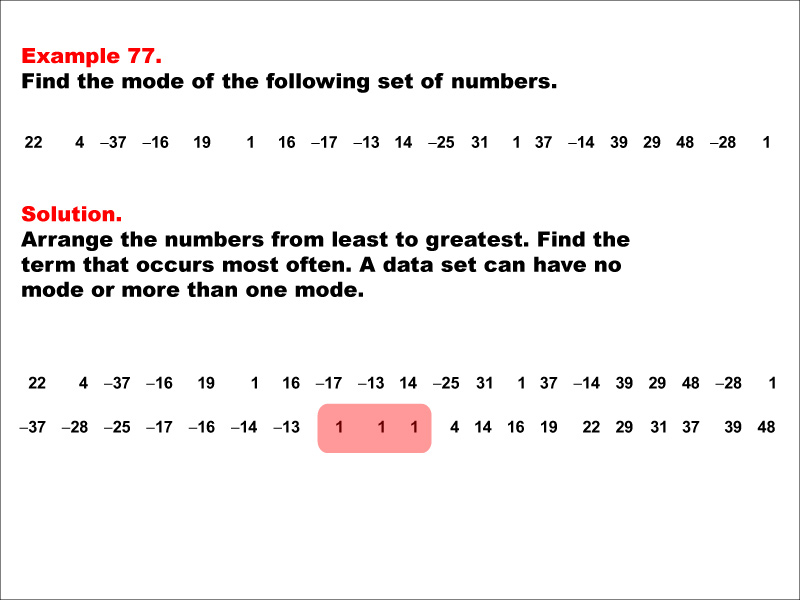
Display Title
Math Example--Measures of Central Tendency--Mode: Example 77
Display Title
Math Example--Measures of Central Tendency--Mode: Example 77

Topic
Measures of Central Tendency
Description
The image shows a math example focused on finding the mode of a set of numbers. The numbers are initially listed in random order and then rearranged from least to greatest. The mode is highlighted. This demonstrates how to identify the mode when a number appears more frequently than others in a data set that includes both positive and negative numbers.
Lessons on measures of central tendency help students understand how to interpret data using different statistical measures like mean and median along with mode.
Teacher's Script
This example provides insight into identifying modes within complex datasets containing repeating elements at varying frequencies; specifically here highlighting 1. By sorting these values systematically first before identifying patterns becomes crucial especially when dealing real-world applications where variability often exists naturally requiring thorough examination prior drawing conclusions based solely upon initial observations alone without further investigation into underlying factors contributing towards observed outcomes ultimately leading towards informed decision-making processes overall thereby fostering critical thinking skills development amongst learners alike regardless field study involved whether mathematics science economics business etcetera alike!
For a complete collection of math examples related to Measures of Central Tendency click on this link: Math Examples: Measures of Central Tendency: Mode Collection.
| Common Core Standards | CCSS.MATH.CONTENT.6.SP.B.4, CCSS.MATH.CONTENT.6.SP.A.3, CCSS.MATH.CONTENT.HSS.ID.A.2, CCSS.MATH.CONTENT.HSS.ID.A.3 |
|---|---|
| Grade Range | 6 - 12 |
| Curriculum Nodes |
Algebra • Probability and Data Analysis • Data Analysis |
| Copyright Year | 2014 |
| Keywords | data analysis, tutorials, measures of central tendency, mode, average |